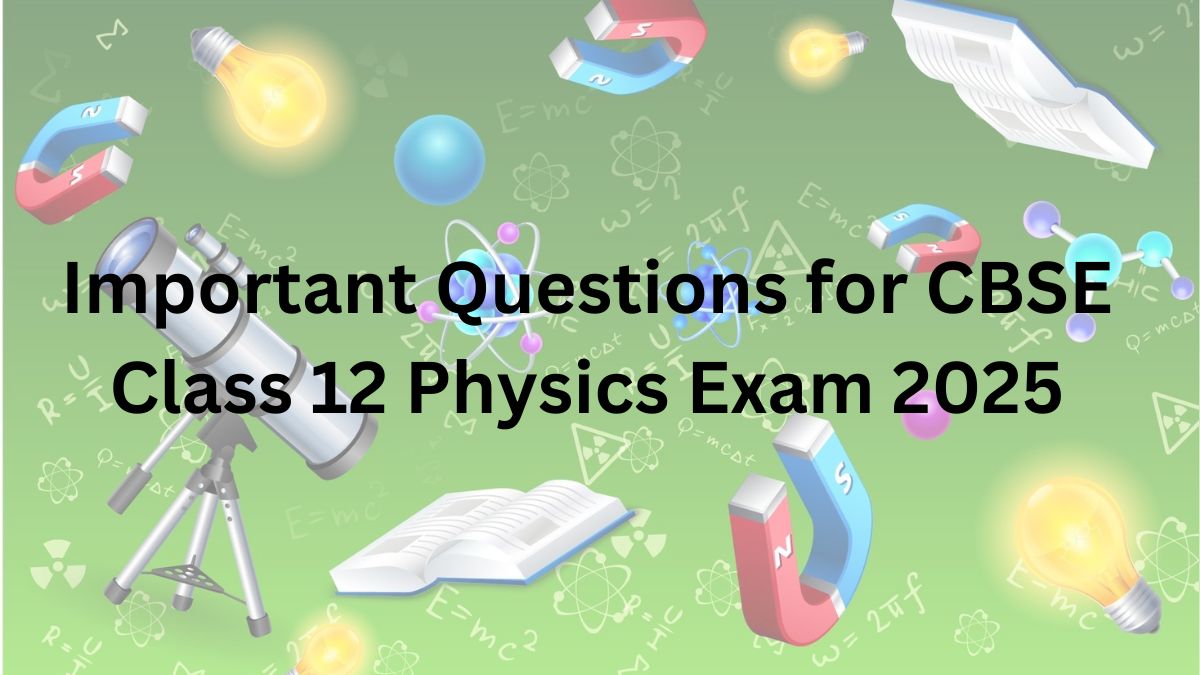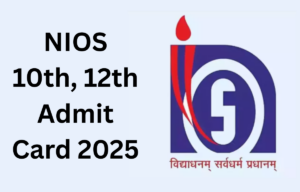Table of Contents
The Central Board of Secondary Education has announced the conduction of the class 12 Physics Exam for the academic session 2024-25 on February 21, 2025. All the students who are to appear in the Physics Exam will have already completed their preparations for the exam while they might be searching for the sure shot questions for the CBSE Class 12 Physics Exam 2025. Therefore in this article, we have shared the most important questions for the CBSE 12th Physics Exam 2025, scroll down in the article below to download the PDF.
CBSE Class 12 Physics Exam 2025: Most Repeated Questions
The students preparing for the CBSE Class 12 Physics Exam 2025 can now check the chapter-wise most repeated questions in the table below. Scroll down in the table below to check the chapter-wise most repeated questions:
| CBSE Class 12 Physics Exam 2025: Most Repeated Questions | |
| Chapter | Question |
| Chapter 1: Electric Charges and Fields | Q1: State Gauss’s theorem and apply it to find the electric field due to a uniformly charged wire. |
| Q2: Derive the expression for the electric field due to an electric dipole on its axial line. | |
| Chapter 2: Electrostatic Potential and Capacitance | Q1: Derive the expression for the potential energy of a system of two-point charges. |
| Q2: Explain the working of a parallel plate capacitor with a dielectric slab. Derive the expression for capacitance. | |
| Chapter 3: Current Electricity | Q1: State and explain Kirchhoff’s laws with an example. |
| Q2: Derive the relation between current density, drift velocity, and electric field. | |
| Q3: A potentiometer is used to measure the EMF of a cell. Why is it preferred over a voltmeter for such measurements? | |
| Chapter 4: Moving Charges and Magnetism |
Q1: Derive the expression for the force acting on a charged particle moving in a uniform magnetic field. |
| Q2: State Biot-Savart law. Derive the expression for magnetic field at the center of a circular loop carrying current. | |
| Chapter 6: Electromagnetic Induction |
Q1: State Faraday’s laws of electromagnetic induction and derive the induced EMF expression. |
| Q2: Explain the working of an AC generator with a labeled diagram. | |
| Chapter 7: Alternating Current |
Q1: Derive the expression for impedance of an LCR series circuit. |
| Q12: Explain resonance in an AC circuit and its condition. | |
| Chapter 9: Ray Optics and Optical Instruments |
Q1: Derive the lens maker’s formula for a convex lens. |
| Q2: Explain total internal reflection with conditions for it to occur. | |
| Chapter 10: Wave Optics |
Q1: State conditions for constructive and destructive interference in YDSE. |
| Q2: Define wavefront and explain the types (spherical, plane, cylindrical). | |
| Q3: Explain Huygens’ principle and prove the laws of reflection or refraction. | |
| Q4: Derive condition for constructive and destructive interference in YDSE. | |
| Chapter 11: Dual Nature of Matter and Radiation |
Q1: State Einstein’s photoelectric equation and explain its significance. |
| Q2: Derive the expression for de Broglie wavelength of a particle. | |
| Chapter 12: Atoms | Q1: Explain Bohr’s postulates and derive the expression for the radius of an electron’s orbit in a hydrogen atom. |
| Chapter 13: Nuclei | Q2: Explain the binding energy curve and its significance. |
| Chapter 14: Semiconductor Electronics |
Q1: Explain the working of a p-n junction diode. |
| Q2: Draw the output waveform for half-wave and full-wave rectifiers. | |

Important Questions for CBSE Class 12 Physics Exam 2025
Q1. The electric field at a point on the axis of an electric dipole is directed:
(a) Perpendicular to the dipole
(b) Along the dipole moment
(c) Opposite to the dipole moment
(d) None of these
Q2. A wire of resistance R is stretched to double its original length. The new resistance of the wire will be:
(a) 2R
(b) 4R
(c) R/2
(d) R/4
Q3. Kirchhoff’s first law is based on the conservation of:
(a) Energy
(b) Charge
(c) Momentum
(d) Angular momentum
Q4. The drift velocity of electrons in a conductor is v when a potential difference V is applied across it. If V is doubled, the drift velocity will be:
(a) v/2
(b) v
(c) 2v
(d) 4v
Q5. The torque acting on a magnetic dipole in a uniform magnetic field is maximum when the angle between the magnetic moment and the field is:
(a) 0°
(b) 45°
(c) 90°
(d) 180°.


 NEET 2025 Admit Card Release Date Out, C...
NEET 2025 Admit Card Release Date Out, C...
 CBSE Result 2025: Will CBSE Release the ...
CBSE Result 2025: Will CBSE Release the ...
 NIOS 10th, 12th Admit Card 2025 released...
NIOS 10th, 12th Admit Card 2025 released...